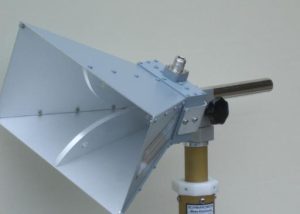What Does the Ratio 0.9/1.2 Represent in Technology?
In the realm of technology, ratios often serve as critical indicators of performance, efficiency, and design standards. The ratio 0.9/1.2, while seemingly simple, can represent various aspects depending on the context in which it is applied. This article explores the significance of the 0.9/1.2 ratio in different technological applications, shedding light on its importance and usage.

Antenna Design and Performance
In the field of antenna design, the ratio 0.9/1.2 can refer to the size or aspect ratio of antennas, particularly those used in satellite communications or quick deploy systems. This ratio could describe the relative dimensions of an antenna's components, ensuring optimal performance and deployment efficiency.
Quick Deploy Antennas
For instance, a 0.9/1.2 meter quick deploy auto-acquisition antenna utilizes this ratio to describe its size. This particular ratio ensures that the antenna is compact enough for easy transport and deployment while still providing sufficient surface area for effective signal capture and transmission. Quick deploy antennas are essential in scenarios requiring rapid setup, such as disaster recovery, military operations, and remote broadcasting.
Signal-to-Noise Ratio (SNR)
The ratio 0.9/1.2 can also be significant in the context of signal-to-noise ratio (SNR) in telecommunications. SNR is a measure of signal strength relative to background noise. An SNR of 0.9/1.2, although not typically expressed in this manner, might indicate a near-ideal condition where the signal strength (0.9) is very close to the noise level (1.2). In real-world applications, higher SNR values are preferred to ensure clearer signal transmission with minimal interference.
Aspect Ratio in Display Technology
In display technology, the 0.9/1.2 ratio could represent the aspect ratio of screens or monitors. Aspect ratio is the proportional relationship between a display's width and height. While the standard aspect ratios for most screens are 16:9 or 4:3, specialized displays might use non-standard ratios like 0.9/1.2 for specific applications, such as digital signage or unique display installations in architecture and design.
Specialized Displays
Such specialized displays might be used in contexts where traditional aspect ratios do not fit the intended design or purpose. For example, a vertical display in a public information kiosk could benefit from a 0.9/1.2 ratio to provide a taller, narrower screen that fits the available space and enhances readability.
Material Properties in Engineering
The ratio 0.9/1.2 can also be applied in engineering to describe material properties, such as density or strength-to-weight ratios. Engineers might use this ratio to compare two different materials, indicating that one material (with a property value of 0.9) is slightly less dense or strong than another (with a property value of 1.2).
Applications in Aerospace
In aerospace engineering, selecting materials with the optimal strength-to-weight ratio is crucial for designing efficient and effective aircraft and spacecraft. A 0.9/1.2 ratio could guide engineers in choosing materials that offer the best balance between strength and weight, ensuring both durability and performance.
The 0.9/1.2 ratio represents various critical aspects in technology, from antenna design and signal quality to display proportions and material properties. Understanding these applications highlights the importance of such ratios in optimizing performance, ensuring reliability, and meeting specific design requirements across different technological fields. Whether in communication systems, display technology, or engineering materials, this ratio plays a significant role in achieving optimal outcomes.